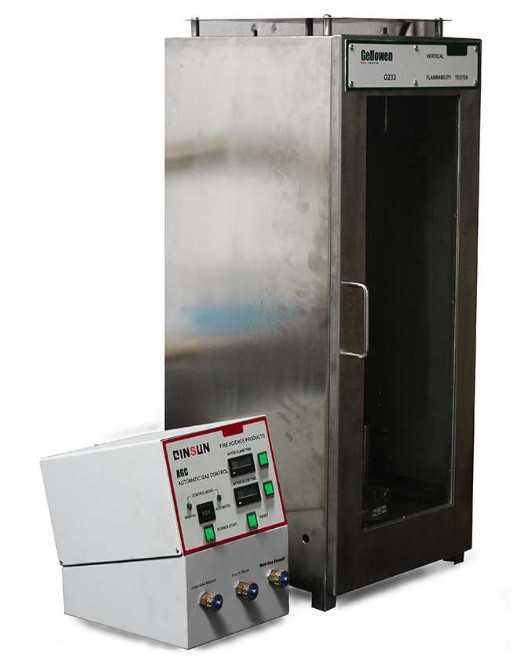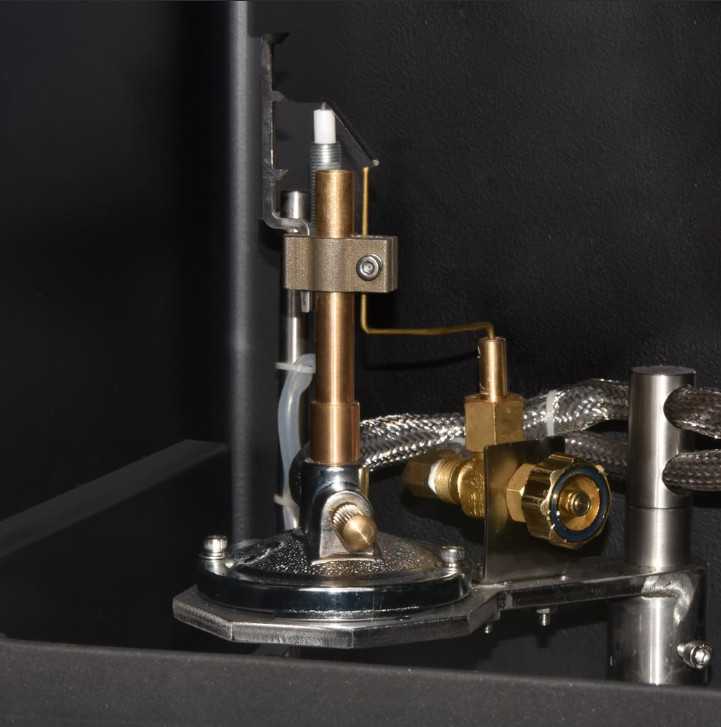What must you look for when using the Vertical Flammability Chamber?

The Vertical Flammability Chamber is developed by the research institute on the flame retardancy of plastics. It is mainly used to determine the non-flammability of plastics, rubber or film under the direct combustion of specified fire source. The tester is mainly applicable to the research, production and quality inspection departments of lighting equipment, low-voltage electrical appliances, household appliances, motors, tools, instruments and other equipment as well as electrical and electronic plastic or rubber products and their components and components, as well as the type approval of insulating materials, engineering plastics, fireproof sealing materials or other solid combustible materials industries.

The product is evaluated by using a Bunsen burner of a specified size and a specific gas source (methane or natural gas) to apply a certain flame height and a certain flame angle to a horizontal or vertical specimen several times at regular intervals, and to assess its flammability by the duration of ignition and scorching of the specimen and the ignition of the ignition material underneath.
Vertical Flammability Chamber should pay attention to the following 6 things when using:
1. After the test, the power switch and the main valve of the gas cylinder should be turned off to confirm that there is no burning material on fire before leaving the site.
2. After each experiment, the rotameter needs to turn its knob to Z small to prevent the rotor from jumping rapidly when starting the gas next time and affecting its life.
3. The exhaust fan cannot be started during the test and calibration. Immediately after each calibration and test, the glass door and exhaust fan are opened to remove all fumes from the test chamber.

4. Methane (minimum 98.0% purity) having a nominal heating value of 100 Btu (thermochemical energy) per cubic foot or 37.3 MJ/m3) or 8.9 kcal (thermochemical energy) per cubic meter. The gas that provides the test flame can be methane, propane, butane, and these combustible gases can provide the flame required by the burner and are interchangeable. Propane technical grade must be at least 98% pure and have a calorific value of at least 94+/-1MJ/m3 (at 25°C), butane technical grade must be at least 99% pure and have 120+/-3MJ /m3 (at 25°C) calorific value. In any case, the fuel gas shall be of such a grade that the test flame may be calibrated.
5. The flame of the blowtorch should be calibrated at least once every 30 days and when the tank methane gas is changed or any gas equipment is changed. If the gas used is not the methane grade required by the standard, the torch flame should be calibrated every day immediately before the test.
6. Before each test when the torch tube is vertical and the torch is away from the specimen, check the gas flame to ensure that its total height is 20±1mm, as established during calibration. If, without changing the setting, the flame changes from blue to bright, this indicates that the canister is running out of gas and that some of the concentration depletion indicator materials (e.g. propane) that the supplier will add to the canister are burning. In this case the gas tank should be marked empty and then returned for refilling. If, without changing the setting, the total flame is blue and the height of the blue inner flame is not 20±1mm, the gas in the canister may be under-pressurised.
For customers interested in purchasing a Vertical Flammability Chamber, please leave a message online and QINSUN Instruments will provide a relevant quote within 24 hours!
2023-02-03 11:31


